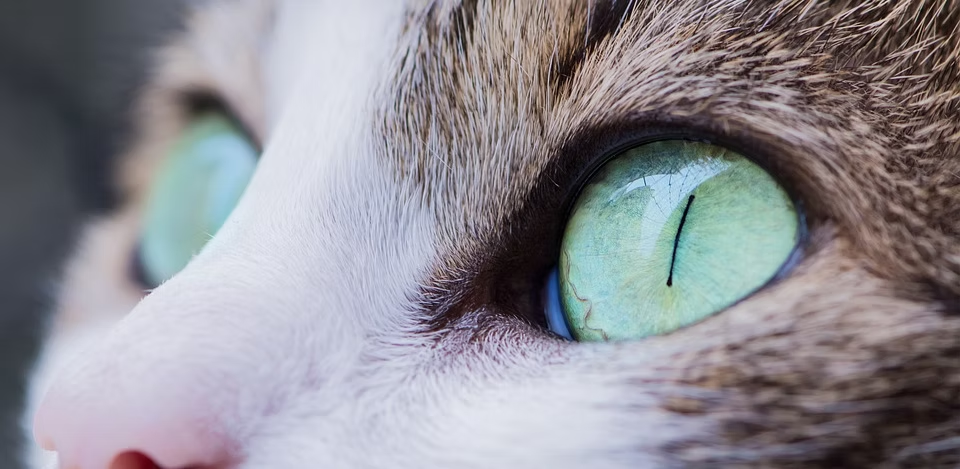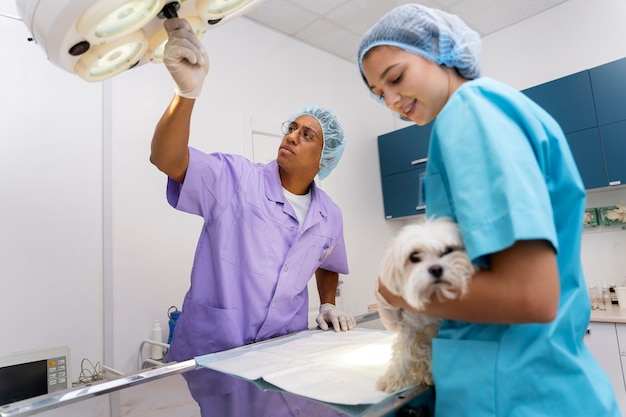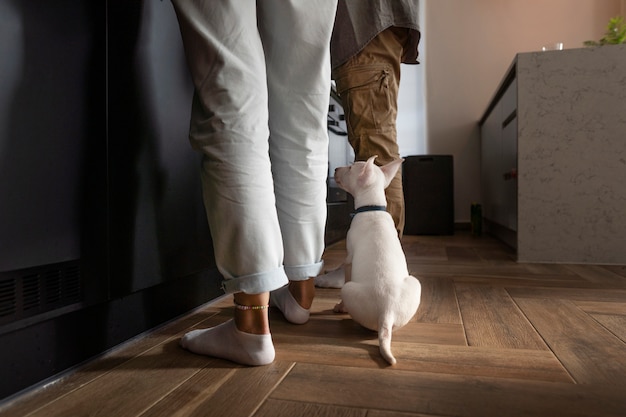Understanding Cataract Surgery and Recovery for Pets


Understanding Cataract Surgery and Recovery for Pets
Caring for a pet with vision changes can be overwhelming, especially when the diagnosis is cataracts. Pet owners in Plano and surrounding communities often wonder if advanced treatments like cataract removal are truly an option for their beloved companions. At Animal Eye Specialists, located at 1545 W Plano Pkwy, Plano, TX 75075, our board-certified veterinary ophthalmologist offers specialized eye care exclusively for animals, including state-of-the-art pet cataract surgery in Plano. In this blog, we will help you understand what cataracts are, how they are treated in pets, the expected recovery process, and what makes our approach unique for families seeking a veterinary ophthalmologist near me. You’ll also discover how our comprehensive follow-up care helps restore and protect your pet’s vision, whether you are in Plano or searching for advanced pet cataract surgery near me.
If you are considering surgical options for your pet or have been referred for an advanced procedure like cataract removal (phacoemulsification) with intraocular lens implantation, this blog will guide you through what to expect every step of the way.
Recognizing Cataracts in Pets: Signs and Symptoms
Cataracts can develop gradually or rapidly, often leaving pet owners uncertain about what is happening to their animal’s eyes. Key symptoms include a noticeable cloudy or bluish appearance in one or both eyes, which may be most visible when your pet looks directly at the light. Additional signs are changes in vision such as bumping into familiar objects, hesitancy on stairs, or reluctance to go outside at night. Some pets may show signs of eye discomfort, including rubbing their face with their paws or squinting. In dogs, cataracts are a leading cause of sudden vision loss, but in cats and other species, the causes may be more varied.
If you notice that your pet is struggling to find their food bowl, hesitating before jumping onto the couch, or showing new anxiety about dark or unfamiliar spaces, these changes could be early indicators of cataracts. Sometimes owners confuse the natural aging process with vision loss, but it’s important to recognize that not all cloudiness is due to cataracts. Only a veterinary ophthalmologist can determine the true cause of vision changes and whether pet cataract surgery in Plano is appropriate for your pet’s needs.
Why Do Pets Develop Cataracts? Understanding the Causes
Cataracts are defined as an opacity or cloudiness of the lens inside the eye, which prevents light from reaching the retina and impairs vision. The most common causes of cataracts in pets are genetics, diabetes mellitus, trauma, aging, and occasionally inflammatory or infectious diseases. In certain breeds, inherited cataracts can appear even in young animals, while in older pets, lens changes are often part of the natural aging process.
For diabetic dogs, cataract development can be sudden and severe, sometimes occurring within weeks of a diabetes diagnosis. Trauma to the eye, such as a puncture or blunt injury, may also disrupt the lens and lead to cataract formation. Additionally, certain chronic eye conditions can contribute to lens changes over time. Understanding the underlying cause is essential because it impacts both the treatment plan and the likelihood of successful vision restoration.
At Animal Eye Specialists, our veterinary team uses advanced diagnostic tools to determine the exact cause and stage of your pet’s cataracts. This includes procedures such as slit lamp examination, which helps us evaluate the eye’s structures in detail, and direct and indirect ophthalmoscopy, which allows for a thorough assessment of the retina and optic nerve. These comprehensive exams are always performed by a board-certified veterinary ophthalmologist, ensuring every detail is carefully considered before recommending phacoemulsification for pets.
Advanced Treatment: Pet Cataract Surgery in Plano
When cataracts begin to interfere with your pet’s quality of life, advanced surgical intervention may be recommended. The gold standard procedure for treating cataracts in animals is phacoemulsification, which uses ultrasound technology to break up and remove the cloudy lens material. In most cases, an artificial lens (intraocular lens implant) is then placed to restore near-normal vision.
What Is Phacoemulsification for Pets?
Phacoemulsification for pets is a minimally invasive eye surgery that involves tiny incisions, reducing healing time and risk of complications. The veterinary ophthalmologist inserts a fine probe into the eye, which emits ultrasonic waves to emulsify the cataract, allowing it to be carefully vacuumed away. Following removal, a foldable artificial lens is implanted where the natural lens once sat, helping your pet focus images properly and regain clear vision.
Animal Eye Specialists is proud to offer this advanced procedure for families seeking specialized pet cataract surgery near me. Every surgical candidate undergoes a thorough pre-operative evaluation, including ocular ultrasound and electroretinography, to ensure the retina and optic nerve are healthy and capable of supporting restored vision. The surgery itself is performed with the same precision and technology used in human ophthalmology, reflecting our commitment to excellence in specialty eye care.
If you would like to read more about the specifics of this procedure, our page on cataract removal (phacoemulsification) with intraocular lens implantation provides a detailed explanation for pet owners.
What to Expect During Surgery and Recovery
Prior to surgery, your pet will receive a comprehensive ophthalmic exam and bloodwork to ensure they are healthy enough for anesthesia. The day of surgery, most pets are admitted in the morning and typically go home the same evening or the following day. Pain management and careful handling are top priorities, and our veterinary professionals strive to make every step as stress-free as possible.
After surgery, pets will need to wear an Elizabethan collar to prevent rubbing or scratching. You may notice mild redness, swelling, or tearing during the first few days, which is a normal part of the healing process. Medications, including eye drops and oral medications, will be prescribed to prevent infection and control inflammation. Most pets regain functional vision within a few days, although full healing may take several weeks.
We strongly encourage close follow-up, as complications, although rare, can occur. Our post-operative treatment protocols are designed to monitor healing and address any issues promptly. Owners should be prepared for multiple recheck appointments, especially in the first few months after surgery.
Supporting Your Pet at Home: Prevention and Aftercare
While not all cataracts can be prevented, some proactive steps can reduce risk or slow progression. For diabetic pets, maintaining tight blood sugar control can delay the onset of cataracts. Regular veterinary checkups are important, as early detection allows for better management of chronic conditions that may affect eye health. At home, keep your pet’s living environment safe and predictable, especially if their vision is impaired. Move furniture slowly and avoid sudden changes in layout that might confuse or injure your pet.
After surgery, diligent home care is key to a successful outcome. Administer all prescribed medications exactly as directed, and contact your veterinary ophthalmologist if you notice persistent redness, discharge, squinting, or changes in vision. Avoid allowing your pet to swim, bathe, or play in dusty environments during the initial healing period. Your attentiveness will help ensure your pet enjoys the full benefits of their restored sight.
If your pet has a history of eye trauma, chronic illness, or breed predisposition, regular evaluations with a specialist veterinarian near me can catch problems early and provide guidance on long-term eye health.
When to See a Veterinary Ophthalmologist
If you notice any changes in your pet’s eyes or vision, prompt evaluation by a board-certified veterinary ophthalmologist is essential. Warning signs that require immediate attention include sudden blindness, severe redness, cloudiness, squinting, or evidence of pain. For diabetic pets, rapid onset of cataracts is common, and delays in care can lead to irreversible vision loss or secondary complications like glaucoma.
General practitioners may refer you to a specialist when advanced diagnostics, surgical intervention, or long-term management are required. At Animal Eye Specialists, our veterinary team welcomes referrals and works closely with your primary veterinarian to ensure the best possible outcome. Whether you are searching for a cataract surgery vet near me or simply need answers about your pet’s vision, our clinic serves Plano and surrounding communities with expert, compassionate care.
Conclusion: Restoring Vision and Quality of Life with Pet Cataract Surgery in Plano
Choosing cataract surgery for your pet is a significant decision, but it can dramatically improve both vision and quality of life for many animals. At Animal Eye Specialists, our board-certified veterinary ophthalmologist in Plano is dedicated exclusively to advanced eye care for pets, offering the highest standard of surgical and post-operative support. Our Fear Free-based approach ensures every patient receives gentle, individualized care from the initial consultation through the entire recovery process.
If you are concerned about your pet’s vision or have been referred for advanced procedures like phacoemulsification for pets, we invite you to contact our veterinary team for an expert consultation. Our clinic is a trusted resource for those searching for a specialist vet near me or pet cataract surgery in Plano. To schedule an appointment or learn more about our services, call (972) 845-9948 or visit us at 1545 W Plano Pkwy, Plano, TX 75075.
With the right diagnosis, advanced treatment, and compassionate follow-up, your pet can enjoy a brighter, more confident future. For more information on surgical recovery or complex eye conditions, our page on complicated ophthalmic conditions is an excellent starting point. Remember, timely action can make all the difference in preserving your pet’s sight. If you are looking for a board-certified veterinary ophthalmologist near me, Animal Eye Specialists in Plano is here to help every step of the way.


















